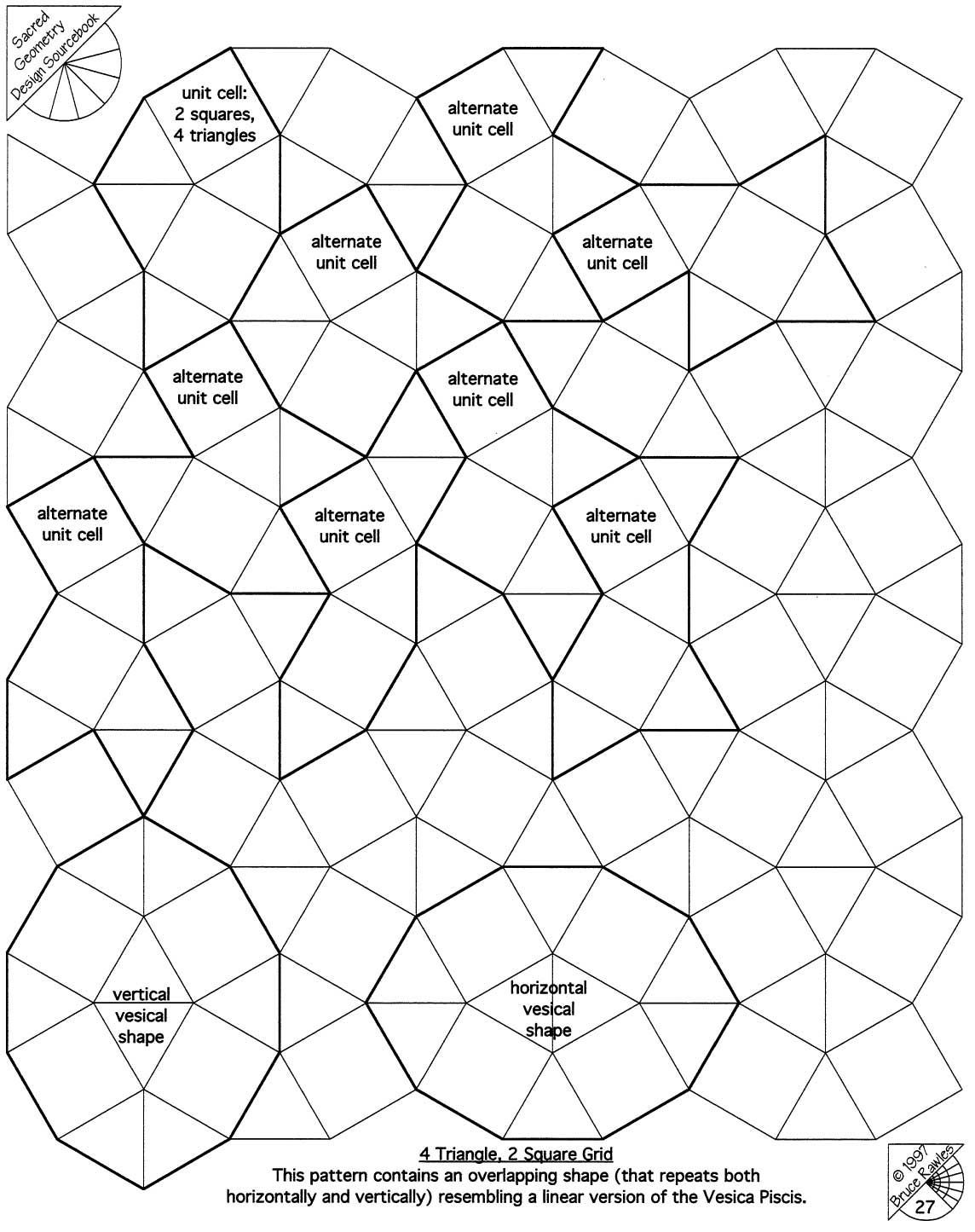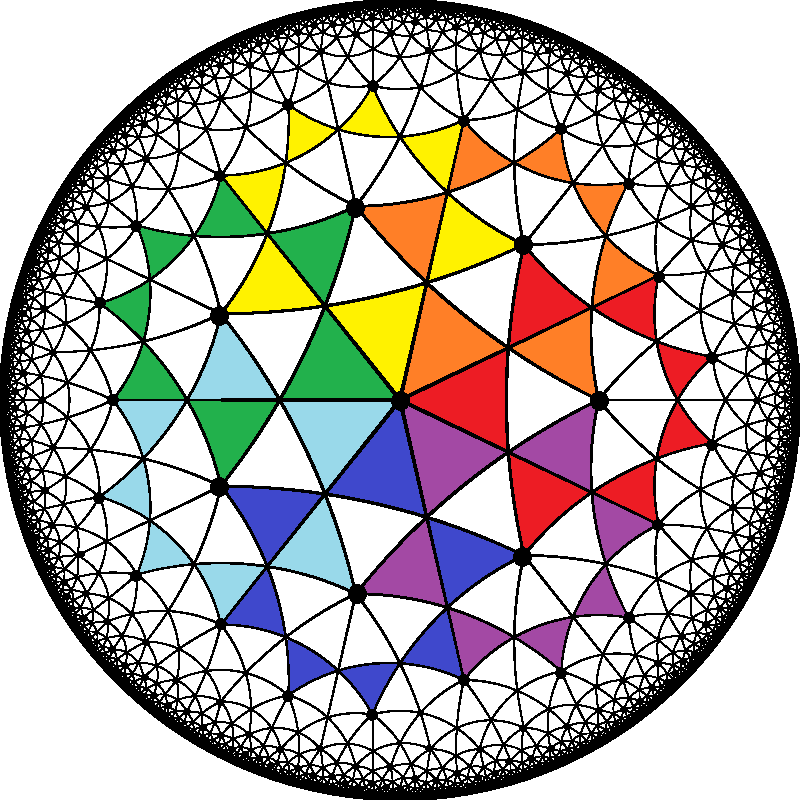
I recently learned of the passing of Keith Critchlow through this obituary in The Guardian. One of my first introductions – in the early 1970s – to what has become known as sacred geometry was through the books of Keith Critchlow, notably Order In Space and later, Islamic Patterns: An Analytical and Cosmological Approach. The former book has small illustrations of the tesselations (2-D tiling patterns) comprised of regular polygons. I thought these classic regular tilings all merited a full page (along with numerous archetypical variations) – so these make up a considerable portion of my first book, including pages 16-42, plus other tiling patterns inspired by these on pages 43-95, many unique to SGDS.
Here’s an example (page 27) of one of the small sketches from Prof. Critchlow’s book that I expanded and gave an entire page, in order to facilitate photocopying, coloring – for adults or “kids” of any age, arts, crafts or what have you…
You’ll note that on these 2D tesselation pages I’ve also added “unit cell” variations that show some of the possible groupings of polygon components that can make “step and repeat” (via horizontal and/or vertical translation) patterns that tile the plane in two dimensions.

I’m not sure if Order In Space was my first exposure to the 5 Platonic Solids and 13 Archimedean Solids, but this may be likely, and pages 196-214 in Sacred Geometry Design Sourcebook – Universal Dimensional Patterns were certainly inspired – in part – by Critchlow’s illustrations. You can find other useful tables in the back of SGDS that were also helped by the example of Critchlow’s generous offerings of useful patterns, ideas, and interconnections.
Elsewhere in Order In Space, he shows a matrix grid chart of the various possible permutations of nesting the 5 Platonic Solids inside each other. Again, these lovely little sketches seemed to merit full-page treatment, so they contributed to pages 224-229 in SGDS.
When I was nearing completion of SGDS in 1997, I sent a review copy to Professor Critchlow, and he sent a very thoughtful reply which included this testimonial:
“A valuable source book of geometric patterning, very useful data, a reminder of the supra human source of such mathematical forms.”
He also provided some very appropriate advice (which certainly aligned with my own experience) in advance of the initial publication, so I added this underlined sentence to page 5 of SGDS paying homage to what must be many millennia of geometers using straightedge and compass for discovery:
“I strongly encourage experimentation and particularly duplication with your own hand.”
Thanks for many years of inspiration, Keith!
Lots more to explore!!! In the process of researching archives online as well as my own prior work to find 2D tilings and tessellations, I found this excellent Wikipedia page: List of regular polytopes and compounds, which expands this topic into many fascinating connected subjects. Here’s a particularly lovely example image from the Hyperbolic star-tilings section:
